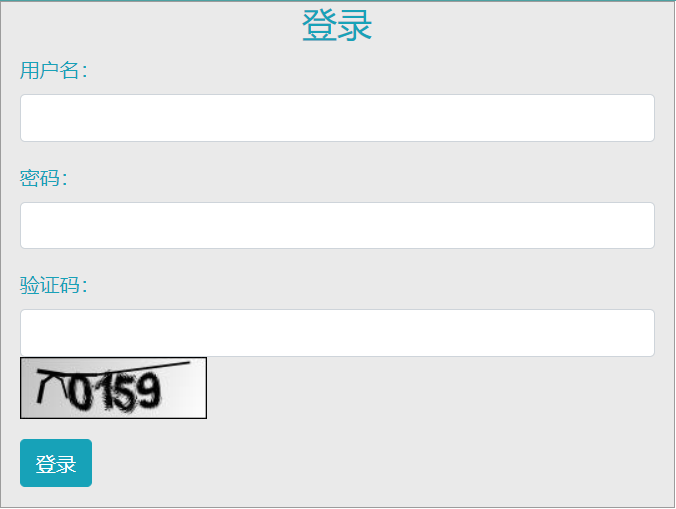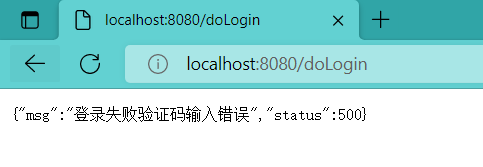您好,登錄后才能下訂單哦!
您好,登錄后才能下訂單哦!
這篇文章主要介紹“Spring Security如何配置多個數據源并添加登錄驗證碼”的相關知識,小編通過實際案例向大家展示操作過程,操作方法簡單快捷,實用性強,希望這篇“Spring Security如何配置多個數據源并添加登錄驗證碼”文章能幫助大家解決問題。
多個數據源是指在同一個系統中,用戶數據來自不同的表,在認證時,如果第一張表沒有查找到用戶,那就去第二張表中査詢,依次類推。
看了前面的分析,要實現這個需求就很容易了,認證要經過AuthenticationProvider,每一 個 AuthenticationProvider 中都配置了一個 UserDetailsService,而不同的 UserDetailsService 則可以代表不同的數據源,所以我們只需要手動配置多個AuthenticationProvider,并為不同的 AuthenticationProvider 提供不同的 UserDetailsService 即可。
為了方便起見,這里通過 InMemoryUserDetailsManager 來提供 UserDetailsService 實例, 在實際開發中,只需要將UserDetailsService換成自定義的即可,具體配置如下:
@Configuration
public class SecurityConfig extends WebSecurityConfigurerAdapter {
@Bean
@Primary
UserDetailsService us1(){
return new InMemoryUserDetailsManager(User.builder().username("testuser1").password("{noop}123")
.roles("admin").build());
}
@Bean
UserDetailsService us2(){
return new InMemoryUserDetailsManager(User.builder().username("testuser2").password("{noop}123")
.roles("user").build());
}
@Override
public AuthenticationManager authenticationManagerBean() throws Exception {
DaoAuthenticationProvider dao1 = new DaoAuthenticationProvider();
dao1.setUserDetailsService(us1());
DaoAuthenticationProvider dao2 = new DaoAuthenticationProvider();
dao2.setUserDetailsService(us2());
ProviderManager manager = new ProviderManager(dao1, dao2);
return manager;
}
@Override
protected void configure(HttpSecurity http) throws Exception {
//省略
}
}首先定義了兩個UserDetailsService實例,不同實例中存儲了不同的用戶;然后重寫 authenticationManagerBean 方法,在該方法中,定義了兩個 DaoAuthenticationProvider 實例并分別設置了不同的UserDetailsService ;最后構建ProviderManager實例并傳入兩個 DaoAuthenticationProvider,當系統進行身份認證操作時,就會遍歷ProviderManager中不同的 DaoAuthenticationProvider,進而調用到不同的數據源。
登錄驗證碼也是項目中一個常見的需求,但是Spring Security對此并未提供自動化配置方案,需要開發者自行定義,一般來說,有兩種實現登錄驗證碼的思路:
自定義過濾器。
自定義認證邏輯。
通過自定義過濾器來實現登錄驗證碼,這種方案我們會在后面的過濾器中介紹, 這里先來看如何通過自定義認證邏輯實現添加登錄驗證碼功能。
生成驗證碼,可以自定義一個生成工具類,也可以使用一些現成的開源庫來實現,這里 采用開源庫kaptcha,首先引入kaptcha依賴,代碼如下:
<dependency> <groupId>com.github.penggle</groupId> <artifactId>kaptcha</artifactId> <version>2.3.2</version> </dependency>
然后對kaptcha進行配置:
package com.intehel.demo.config;
import com.google.code.kaptcha.Producer;
import com.google.code.kaptcha.impl.DefaultKaptcha;
import com.google.code.kaptcha.util.Config;
import org.springframework.context.annotation.Bean;
import org.springframework.context.annotation.Configuration;
import java.util.Properties;
@Configuration
public class KaptchaConfig {
@Bean
Producer kaptcha(){
Properties properties = new Properties();
properties.setProperty("kaptcha.image.width", "150");
properties.setProperty("kaptcha.image.height", "50");
properties.setProperty("kaptcha.textproducer.char.string", "0123456789");
properties.setProperty("kaptcha.textproducer.char.length", "4");
Config config = new Config(properties);
DefaultKaptcha defaultKaptcha = new DefaultKaptcha();
defaultKaptcha.setConfig(config);
return defaultKaptcha;
}
}配置一個Producer實例,主要配置一下生成的圖片驗證碼的寬度、長度、生成字符、驗證碼的長度等信息,配置完成后,我們就可以在Controller中定義一個驗證碼接口了。
package com.intehel.demo.controller;
import com.google.code.kaptcha.Producer;
import org.springframework.beans.factory.annotation.Autowired;
import org.springframework.web.bind.annotation.RequestMapping;
import org.springframework.web.bind.annotation.RestController;
import javax.imageio.ImageIO;
import javax.servlet.ServletOutputStream;
import javax.servlet.http.HttpServletResponse;
import javax.servlet.http.HttpSession;
import java.awt.image.BufferedImage;
import java.io.IOException;
@RestController
public class LoginController {
@Autowired
Producer producer;
@RequestMapping("/vc.jpg")
public void getVerifyCode(HttpServletResponse resp, HttpSession session){
resp.setContentType("image/jpeg");
String text = producer.createText();
session.setAttribute("kaptcha",text);
BufferedImage image = producer.createImage(text);
try(ServletOutputStream out = resp.getOutputStream()) {
ImageIO.write(image,"jpg",out);
} catch (IOException e) {
e.printStackTrace();
}
}
}在這個驗證碼接口中,我們主要做了兩件事:
生成驗證碼文本,并將文本存入HttpSession中。
根據驗證碼文本生成驗證碼圖片,并通過IO流寫出到前端。
接下來修改登錄表單,加入驗證碼,代碼如下:
<!DOCTYPE html> <html lang="en" xmlns:th="http://www.thymeleaf.org"> <head> <meta charset="UTF-8"> <title>登錄</title> <link href="//maxcdn.bootstrapcdn.com/bootstrap/4.1.1/css/bootstrap.min.css" rel="stylesheet" id="bootstrap-css"> <script src="//maxcdn.bootstrapcdn.com/bootstrap/4.1.1/js/bootstrap.min.js"></script> <script src="//cdnjs.cloudflare.com/ajax/libs/jquery/3.2.1/jquery.min.js"></script> </head> <style> #login .container #login-row #login-column #login-box { border: 1px solid #9c9c9c; background-color: #EAEAEA; } </style> <body> <div id="login"> <div class="container"> <div id="login-row" class="row justify-content-center align-items-center"> <div id="login-column" class="col-md-6"> <div id="login-box" class="col-md-12"> <form id="login-form" class="form" action="/doLogin" method="post"> <h4 class="text-center text-info">登錄</h4> <!--/*@thymesVar id="SPRING_SECURITY_LAST_EXCEPTION" type="com"*/--> <div th:text="${SPRING_SECURITY_LAST_EXCEPTION}"></div> <div class="form-group"> <label for="username" class="text-info">用戶名:</label><br> <input type="text" name="uname" id="username" class="form-control"> </div> <div class="form-group"> <label for="password" class="text-info">密碼:</label><br> <input type="text" name="passwd" id="password" class="form-control"> </div> <div class="form-group"> <label for="kaptcha" class="text-info">驗證碼:</label><br> <input type="text" name="kaptcha" id="kaptcha" class="form-control"> <img src="/vc.jpg" alt=""> </div> <div class="form-group"> <input type="submit" name="submit" class="btn btn-info btn-md" value="登錄"> </div> </form> </div> </div> </div> </div> </div> </body> </html>??
登錄表單中增加一個驗證碼輸入框,驗證碼的圖片地址就是我們在Controller中定義的驗證碼接口地址。
接下來就是驗證碼的校驗了。經過前面的介紹,讀者已經了解到,身份認證實際上就是在AuthenticationProvider.authenticate方法中完成的。所以,驗證碼的校驗,我們可以在該方法執行之前進行,需要配置如下類:
package com.intehel.demo.provider;
import org.springframework.security.authentication.AuthenticationServiceException;
import org.springframework.security.authentication.dao.DaoAuthenticationProvider;
import org.springframework.security.core.Authentication;
import org.springframework.security.core.AuthenticationException;
import org.springframework.web.context.request.RequestContextHolder;
import org.springframework.web.context.request.ServletRequestAttributes;
import javax.servlet.http.HttpServletRequest;
public class KaptchaAuthenticationProvider extends DaoAuthenticationProvider{
@Override
public Authentication authenticate(Authentication authentication) throws AuthenticationException {
HttpServletRequest req = ((ServletRequestAttributes)RequestContextHolder.getRequestAttributes()).getRequest();
String kaptcha = req.getParameter("kaptcha");
String serssionKaptcha = (String) req.getSession().getAttribute("kaptcha");
if (kaptcha != null && serssionKaptcha != null && kaptcha.equalsIgnoreCase(serssionKaptcha)){
return super.authenticate(authentication);
}
throw new AuthenticationServiceException("驗證碼輸入錯誤");
}
}這里重寫authenticate方法,在authenticate方法中,從RequestContextHolder中獲取當前請求,進而獲取到驗證碼參數和存儲在HttpSession中的驗證碼文本進行比較,比較通過則繼續執行父類的authenticate方法,比較不通過,就拋出異常。
你可能會想到通過重寫 DaoAuthenticationProvider類的 additionalAuthenticationChecks 方法來完成驗證碼的校驗,這個從技術上來說是沒有問題的,但是這會讓驗證碼失去存在的意義,因為當additionalAuthenticationChecks方法被調用時,數據庫查詢已經做了,僅僅剩下密碼沒有校驗,此時,通過驗證碼來攔截惡意登錄的功能就已經失效了。
最后,在 SecurityConfig 中配置 AuthenticationManager,代碼如下:
package com.intehel.demo.config;
import com.fasterxml.jackson.databind.ObjectMapper;
import com.intehel.demo.Service.MyUserDetailsService;
import com.intehel.demo.handler.MyAuthenticationFailureHandler;
import com.intehel.demo.provider.KaptchaAuthenticationProvider;
import org.springframework.beans.factory.annotation.Autowired;
import org.springframework.context.annotation.Bean;
import org.springframework.context.annotation.Configuration;
import org.springframework.security.authentication.AuthenticationManager;
import org.springframework.security.authentication.AuthenticationProvider;
import org.springframework.security.authentication.ProviderManager;
import org.springframework.security.config.annotation.web.builders.HttpSecurity;
import org.springframework.security.config.annotation.web.configuration.WebSecurityConfigurerAdapter;
import org.springframework.security.web.util.matcher.AntPathRequestMatcher;
import org.springframework.security.web.util.matcher.OrRequestMatcher;
import java.util.HashMap;
import java.util.Map;
@Configuration
public class SecurityConfig extends WebSecurityConfigurerAdapter {
@Autowired
MyUserDetailsService myUserDetailsService;
@Override
protected void configure(HttpSecurity http) throws Exception {
http.authorizeRequests()
.antMatchers("/vc.jpg").permitAll()
.anyRequest().authenticated()
.and()
.formLogin()
.loginPage("/mylogin.html")
.loginProcessingUrl("/doLogin")
.defaultSuccessUrl("/index.html")
.failureHandler(new MyAuthenticationFailureHandler())
.usernameParameter("uname")
.passwordParameter("passwd")
.permitAll()
.and()
.logout()
.logoutRequestMatcher(new OrRequestMatcher(new AntPathRequestMatcher("/logout1","GET"),
new AntPathRequestMatcher("/logout2","POST")))
.invalidateHttpSession(true)
.clearAuthentication(true)
.defaultLogoutSuccessHandlerFor((req,resp,auth)->{
resp.setContentType("application/json;charset=UTF-8");
Map<String,Object> result = new HashMap<String,Object>();
result.put("status",200);
result.put("msg","使用logout1注銷成功!");
ObjectMapper om = new ObjectMapper();
String s = om.writeValueAsString(result);
resp.getWriter().write(s);
},new AntPathRequestMatcher("/logout1","GET"))
.defaultLogoutSuccessHandlerFor((req,resp,auth)->{
resp.setContentType("application/json;charset=UTF-8");
Map<String,Object> result = new HashMap<String,Object>();
result.put("status",200);
result.put("msg","使用logout2注銷成功!");
ObjectMapper om = new ObjectMapper();
String s = om.writeValueAsString(result);
resp.getWriter().write(s);
},new AntPathRequestMatcher("/logout1","GET"))
.and()
.csrf().disable();
}
@Bean
AuthenticationProvider kaptchaAuthenticationProvider(){
KaptchaAuthenticationProvider provider = new KaptchaAuthenticationProvider();
provider.setUserDetailsService(myUserDetailsService);
return provider;
}
@Override
public AuthenticationManager authenticationManagerBean() throws Exception {
ProviderManager manager = new ProviderManager(kaptchaAuthenticationProvider());
return manager;
}
}這里配置分三步:首先配置UserDetailsService提供數據源;然后提供一個 AuthenticationProvider 實例并配置 UserDetailsService;最后重寫 authenticationManagerBean 方 法,提供一個自己的PioviderManager并使用自定義的AuthenticationProvider實例。
另外需要注意,在configure(HttpSecurity)方法中給驗證碼接口配置放行,permitAll表示這個接口不需要登錄就可以訪問。
配置完成后,啟動項目,瀏覽器中輸入任意地址都會跳轉到登錄頁面,如圖3-5所示。

圖 3-5
此時,輸入用戶名、密碼以及驗證碼就可以成功登錄。如果驗證碼輸入錯誤,則登錄頁面會自動展示錯誤信息,如下:

關于“Spring Security如何配置多個數據源并添加登錄驗證碼”的內容就介紹到這里了,感謝大家的閱讀。如果想了解更多行業相關的知識,可以關注億速云行業資訊頻道,小編每天都會為大家更新不同的知識點。
免責聲明:本站發布的內容(圖片、視頻和文字)以原創、轉載和分享為主,文章觀點不代表本網站立場,如果涉及侵權請聯系站長郵箱:is@yisu.com進行舉報,并提供相關證據,一經查實,將立刻刪除涉嫌侵權內容。